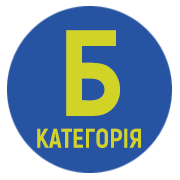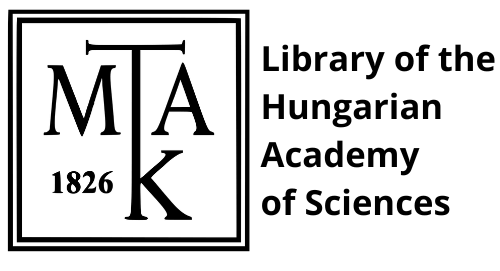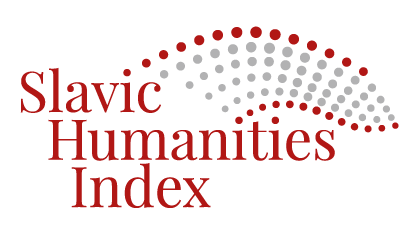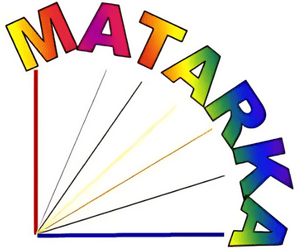Frontier as a diverging factor referring to the language of Székelys in the settlements by Lower Danube
DOI:
https://doi.org/10.58423/2786-6726/2022-2-107-123Keywords:
Székelys of Bukovina, Székelys of the Lower Danube, Hungarians in Vojvodina, bilingualism, factors that influence the languageAbstract
In 1883 South Banat belonged in the Austro-Hungarian Empire, within this it belonged in the historical Hungary. In that year more than 3000 Székelys of Bukovina were settled there, then Székelykeve, Sándoregyháza and Hertelendyfalva settlements came into being by the Lower Danube. (Ancestors of Székelys of Bukovina were those refugees who escaped into Moldva after the hecatomb of Madéfalva, then they went to Bukovina and lived there in 5 villages: Istensegíts, Fogadjisten, Hadikfalva, Józseffalva, Andrásfalva.) In 1918 the Kingdom of Serbs, Croats and Slovenes was formed from the territories of the former Austro-Hungarian Empire, and after the Treaty of Trianon Székelys of the Lower Danube became the citizens of a new state. Past other historical events these days this territory belongs to Republic of Serbia. Originally in Sándoregyháza (Ivanovo) besides the Székelys also Germans and Bulgarians lived, in Székelykeve (Skorenovac) Székelys, other Hungarians from several settlements, Germans and Bulgarians, and in Hertelendyfalva (Vojlovica, today it is part of Pančevo city) Székelys, Germans and Slovakians lived. However, after the Second World War these Germans were relocated. Starting from the 1960s some residents of these settlements left the country (they moved mainly to Western Europe, but Australia too), moreover also the vicinal cities offered workplaces and a new home for them. This paper deals with the data related to the language of Székelys of these settlements by Lower Danube. First base of this examination is the separation after Treaty of Trianon, it has caused several language changes. In Hertelendyfalva Olga Penavin and her team mates started to collect dialectal and other linguistic data already in the 1950s, then they published some papers about the other two settlements too. From their papers of the 1970s and 1980s we know not only about the influence of the more prestigious version of Hungarian, but also the influence of the state language. We can set this Hungarian language originated from Bukovina against the language of the other Székely groups. So we can speak about the frontier as a diverging factor in connection with the language of their groups of Romania and of Hungary too. In these days language of Hungarians living in minority is primarily influenced by the given state language, so the language of Hungarians of Romania and Serbia too. In this paper I examine the linguistic data referring to the three settlements of Lower Danube. These data present the influence of the state language and differ from the language of other groups of Székelys of Bukovina.
References
Arel, Dominique 2015. A népszámlálásokban megjelenő nyelvi kategóriák: vissza- vagy előretekintés? [The original title: Census and Identity. The Politics of Race, Ethnicity, and Language in National Censuses]. REGIO 23. évf. 3. szám. 5–45. o. (In Hungarian).
Balogh Lajos, 2001. A nyelvjárásszigetek [The dialect islands]. In: Kiss Jenő szerk. Magyar dialektológia [Hungarian dialectology]. Budapest: Osiris Kiadó. 316–324. o. (In Hungarian).
Beszédes Valéria, 2005. Szőcs Boldizsár életútja [Boldizsár Szőcs’ walk of life]. In: Sërëgek szárnyán. Szőcs Boldizsár meséi [On the wing of troops. Boldizsár Szőcs’s folk-tales]. Beszédes Valéria gyűjtötte és az utószót írta. Életjel könyvek 115. (In Hungarian).
Fazekas Tiborc, 1979. Archaikus és neológ vonások Hertelendyfalva (Vojlovica) mai magyar nyelvjárásában. [Archaic and neolog features in the dialect of Hertelendyfalva (Vojlovica) in these days]. Magyar Nyelv [Hungarian Language] 75. évf. 3. szám. 355–362. o. (In Hungarian).
Galambos Tibor, 2008. Székelykeve (Skorenovac) [Székelykeve (Skorenovac)]. Kiadja a Székelykevei Helyi Közösség – LO Press Kovin. (In Hungarian).
Göncz Lajos, 1999. A magyar nyelv Jugoszláviában (Vajdaságban) [The Hungarian language in Yugoslavia (in Vojvodina)]. A magyar nyelv a Kárpát-medencében a XX. század végén (II). Budapest–Újvidék: Osiris Kiadó – Fórum Könyvkiadó – MTA Kisebbségkutató Műhely (In Hungarian).
Kiss Jenő, 2001. A kisebbségi anyanyelvoktatás [Mother tongue teaching in minority]. In: Kiss Jenő szerk. Magyar dialektológia [Hungarian dialectology]. Budapest: Osiris Kiadó, 153–156. o. (In Hungarian).
Kiss Jenő, 2014. A nyelvjárások visszaszorulása – okok és okozatok [Retreat of dialects – reasons and effects]. In: Gróf Annamária – N. Császi Ildikó – Szoták Szilvia szerk. Sokszínű nyelvészet – nyelvi sokszínűség a 21. század elején. Írások Kolláth Anna tiszteletére [Multicolour linguistics – linguistic variegation at the beginning of the 21st century. Writings in honor of Anna Kolláth]. Budapest–Alsóőr: Tinta Könyvkiadó – Umiz – Imre Samu Nyelvi Intézet, 175–181. o. (In Hungarian).
Kiss Jenő, 2017. A nyelvjárások [The dialects]. In: Tolcsvai Nagy Gábor szerk. A magyar nyelv jelene és jövője [The present and the future of Hungarian language]. Budapest: Gondolat Kiadó, 199–221. o. (In Hungarian).
Nagy Sívó Zoltán, 1999. Bukovina, mit vétettem? [Bukovina, what did I do?]. Újvidék: Forum Könyvkiadó (In Hungarian).
Nagy Sívó Zoltán, 2003. A főváros árnyékában. A vojlovicai székelyekről, másodízben [In the shadow of the capital. About Székelys of Vojlovica, second time]. Újvidék: Forum Könyvkiadó (In Hungarian).
Pál Helén, 2020. A bukovinai székelyek nyelvjárása [The dialect of Székelys of Bukovina]. Doktori disszertáció. Magánkiadás. (In Hungarian).
Penavin Olga, 1972. Néhány szó a jugoszláviai székelytelepekről – különös tekintettel Székelykevére – (Skorenovac) [Some words about the Székely settlements of Yugoslavia – with particular regard to Székelykeve – (Skorenovac)]. A Novi Sad-i Bölcsészeti kar Évkönyve XV/2. évfolyam (1972). 743–759. o. (In Hungarian).
Penavin Olga – Matijevics Lajos, 1978. A jugoszláviai székelytelepek nyelvatlasza [Dialect atlas of Székely settlements of Yugoslavia]. Újvidék: Magyar Nyelv, Irodalom és Hungarológiai Kutatások Intézete (In Hungarian).
Penavin Olga – Matijevics Lajos, 1980. Székely szójegyzék [Székely glossary]. Újvidék: Magyar Nyelv, Irodalom és Hungarológiai Kutatások Intézete (In Hungarian).
Péntek János – Benő Attila, 2020. A magyar nyelv Romániában (Erdélyben) [The Hungarian language in Romania (in Transylvania)]. Szerkesztette Kontra Miklós. Budapest – Kolozsvár: Erdélyi Múzeum-Egyesület, Gondolat Kiadó (In Hungarian).
Sebestyén Ádám, 1989. A bukovinai székelység tegnap és ma [Székelys of Bukovina yesterday and today]. Szekszárd: Kiadja a Tolna Megyei Könyvtár. (In Hungarian).
Thomka Viktor, 1939. Egy al-dunai székely község szociográfiája [Sociography of a Székely settlement of Lower Danube]. Testvériség [Brotherhood], 1939. év. II. évf. 7–13. szám. http://adattar.vmmi.org/cikkek/16932/hid_2001_11-12_18.pdf (letöltés ideje: 2021. november 11., In Hungarian).
URL1: Kincsesládánk – Székelykeve [Our treasure chest - Székelykeve] 2018.09.01. (A Pannon RTV műsora.) https://pannonrtv.com/tv/kincsesladank/kincsesladank-szekelykeve-20180901 (letöltés ideje: 2021. december 4.)
URL2: Bukovinai székelyek az Al-Duna mentén [Szeklers of Bukovina along the Danube]. 2016. november 16. (A budapesti Polgárok Háza „A magyarság peremvidékei” című évadában – a gyimesi és moldvai csángók után – a bukovinai székelyeket mutatja be.) https://www.youtube.com/watch?v=x9ObuW4PXFc (letöltés ideje: 2021. december 4.)
URL3: Petőfi Sándor Program [Sándor Petőfi Program].
https://www.petofiprogram.hu/petofi-sandor-program (2021. november 28.)
URL4: Kincsesládánk – Hertelendyfalva [Our treasure chest - Hertelendyfalva] 2017.12.02. (A Pannon RTV műsora.)
https://pannonrtv.com/tv/kincsesladank/kincsesladank-hertelendyfalva (letöltés ideje: 2021. december 4.)
URL5: Fényképkiállítással ünnepelték az anyanyelv nemzetközi napját Sándoregyházán [International Mother Tongue Day was celebrated with a photo exhibition in Sándoregyháza] 2021.02.22. (A Pannon RTV műsora.)
https://pannonrtv.com/rovatok/kultura/fenykepkiallitassal-unnepeltek-az-anyanyelv-nemzetkozi-napjat-sandoregyhazan (letöltés ideje: 2021. december 4.)
URL6. Közügyek. A Pannon RTV hírháttér műsora [Public affairs. News background program of Pannon RTV]. 2021.03.19. (A Magyar gyerekek a szórványban. Tudnak-e, akarnak-e anyanyelvükön tanulni? A téma kezdete a videón: 26:37.) https://pannonrtv.com/tv/kozugyek/kozugyek-20210319 (letöltés ideje: 2021. december 4.)
Downloads
Published
How to Cite
Issue
Section
License
Authors retain copyright and grant the journal the right of first publication. The work is simultaneously licensed under a Creative Commons Attribution 4.0 International License (CC BY 4.0), which permits others to share the work with appropriate credit given to the author(s) and the initial publication in this journal.

















